Last month, Dr. Hugo Tovar and I were chatting about computational biology and some common missunderstandings we’d experienced:
- That all CompBio people are interchangeable in our interests and skills.
- That we were just waiting around for experimental biologists to share their data with us, with no research interests of our own.
- That our role was closer to a service core facility than independent research.
We took the proactive approach, talked with the head of the department, Dr. Claudia Rangel-Escareño, and decided to make an academic event, so that all the CompBio researchers at INMEGEN could share our research, and particularly the kind of questions that really motivate us, with our experimental colleagues. And so, the Computational Biology Week was born.
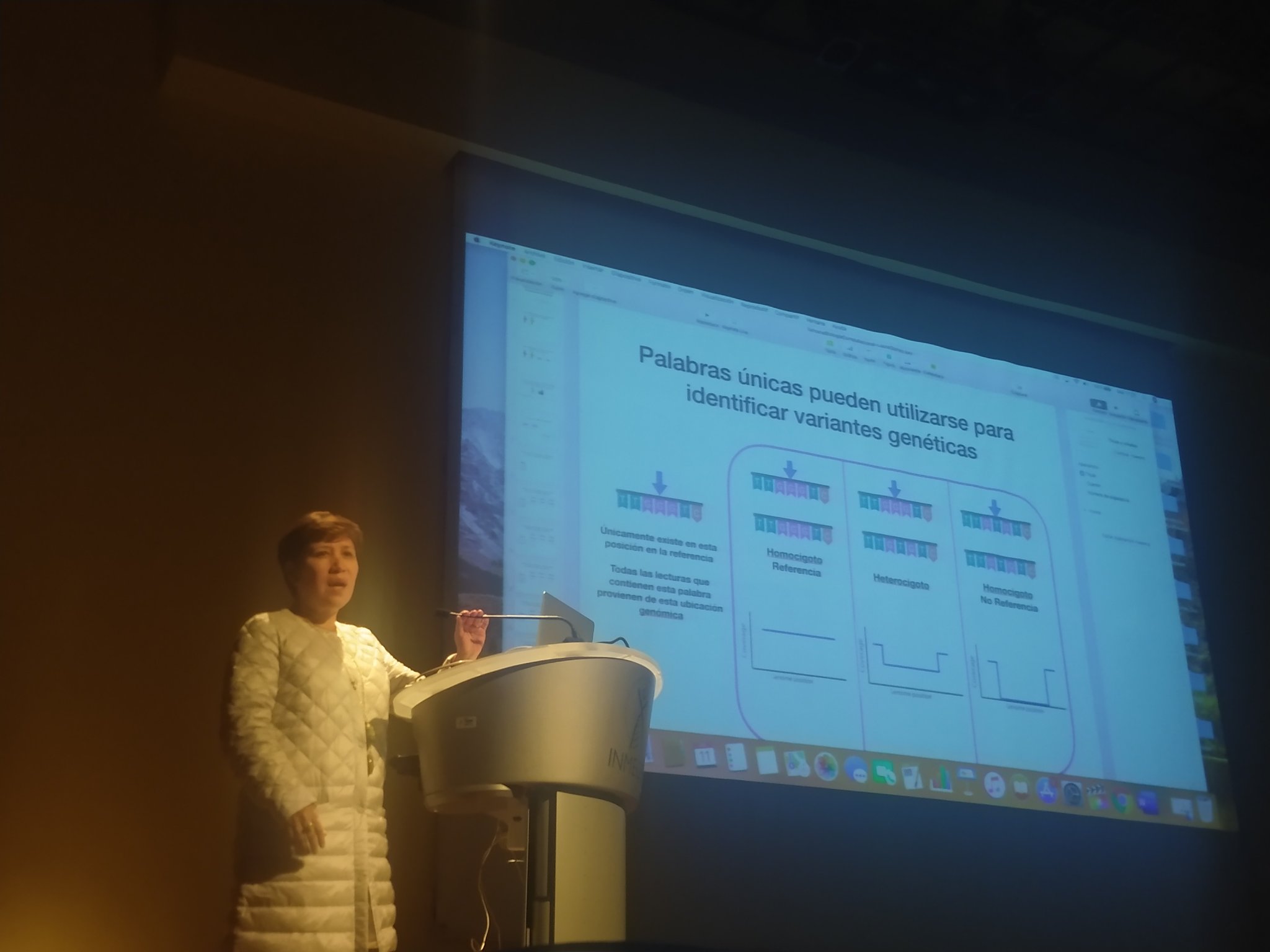
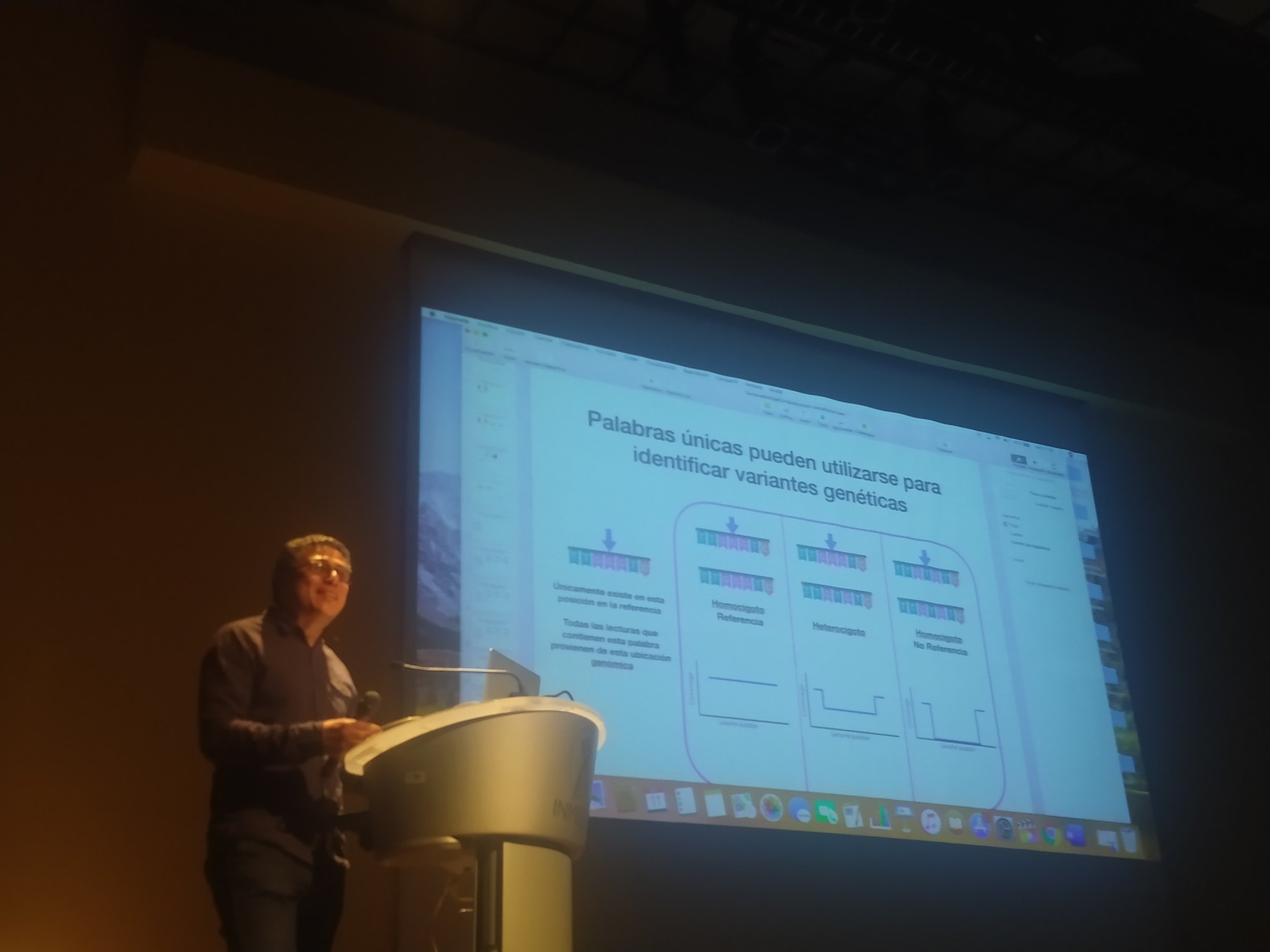
We had a great deal of institutional support to make this work. Most importantly, every researcher of the department was very keen on joining the effort. We had a great turnout, with people from within the Institute, as well as many researchers and students from other Mexico City institutions.
There was a nice variety of genomics-related computational biology topics such as:
Transcriptomics and gene (co) expression:
Gene expression analyses are a popular computational topic among INMEGEN researchers. Enrique Hernández Lemus talked about his concept of in grafo biology, in particular (frequentist) probabilistic network models in breast cancer. This was related to the work of Hugo Tovar on breast cancer master regulators, and Dr. Jesus studies on changes in inter and intrachromosomal gene co-expression ( the ones we’ve discussed here and here )
Claudia Rangel-Escareño for her part, represented the Bayesian approach to transcriptional network modelling. Humberto Gutierrez González gave an alternative viewpoint, focusing on measurable functions when analyzing his co-expression network results.
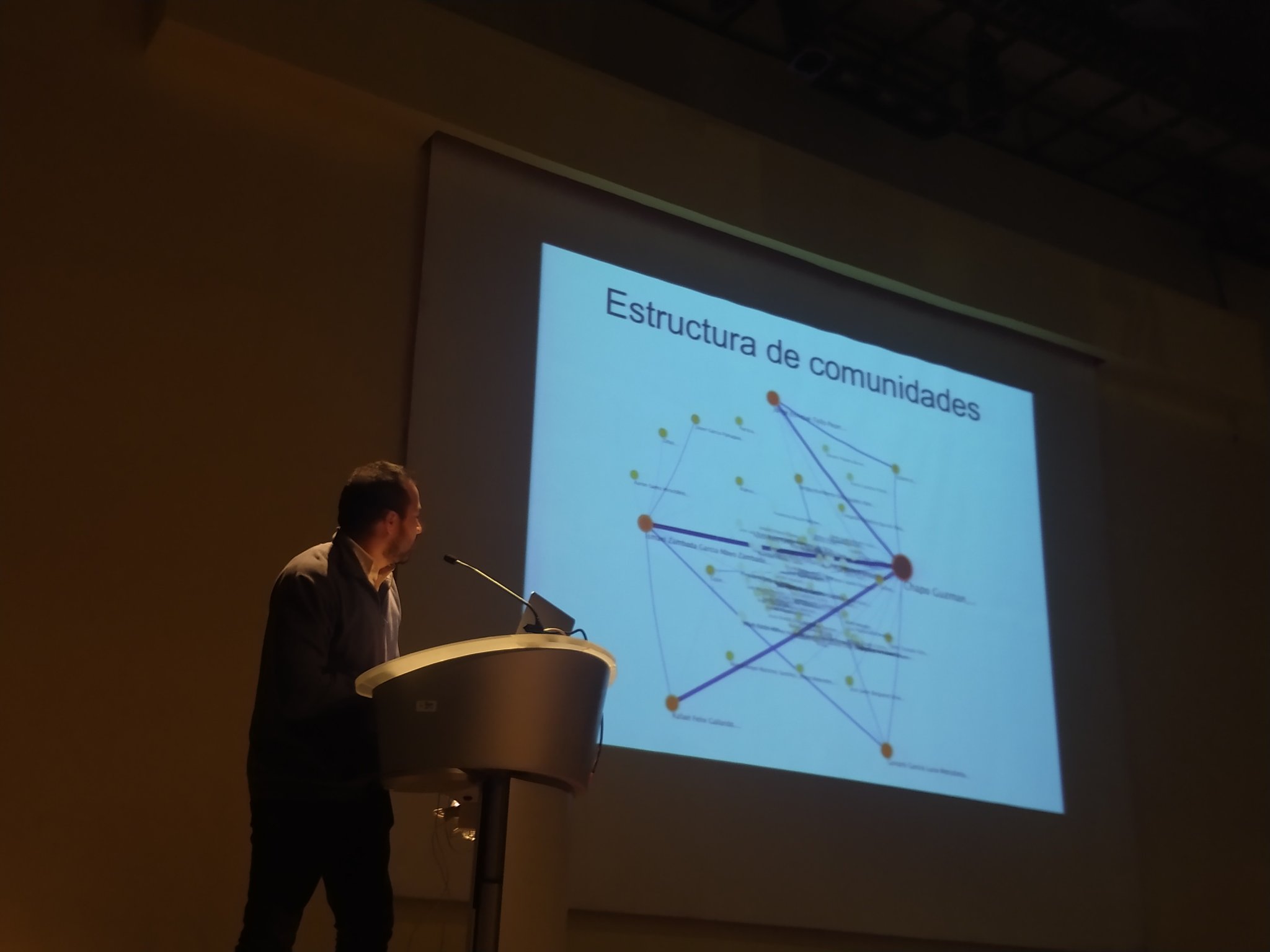
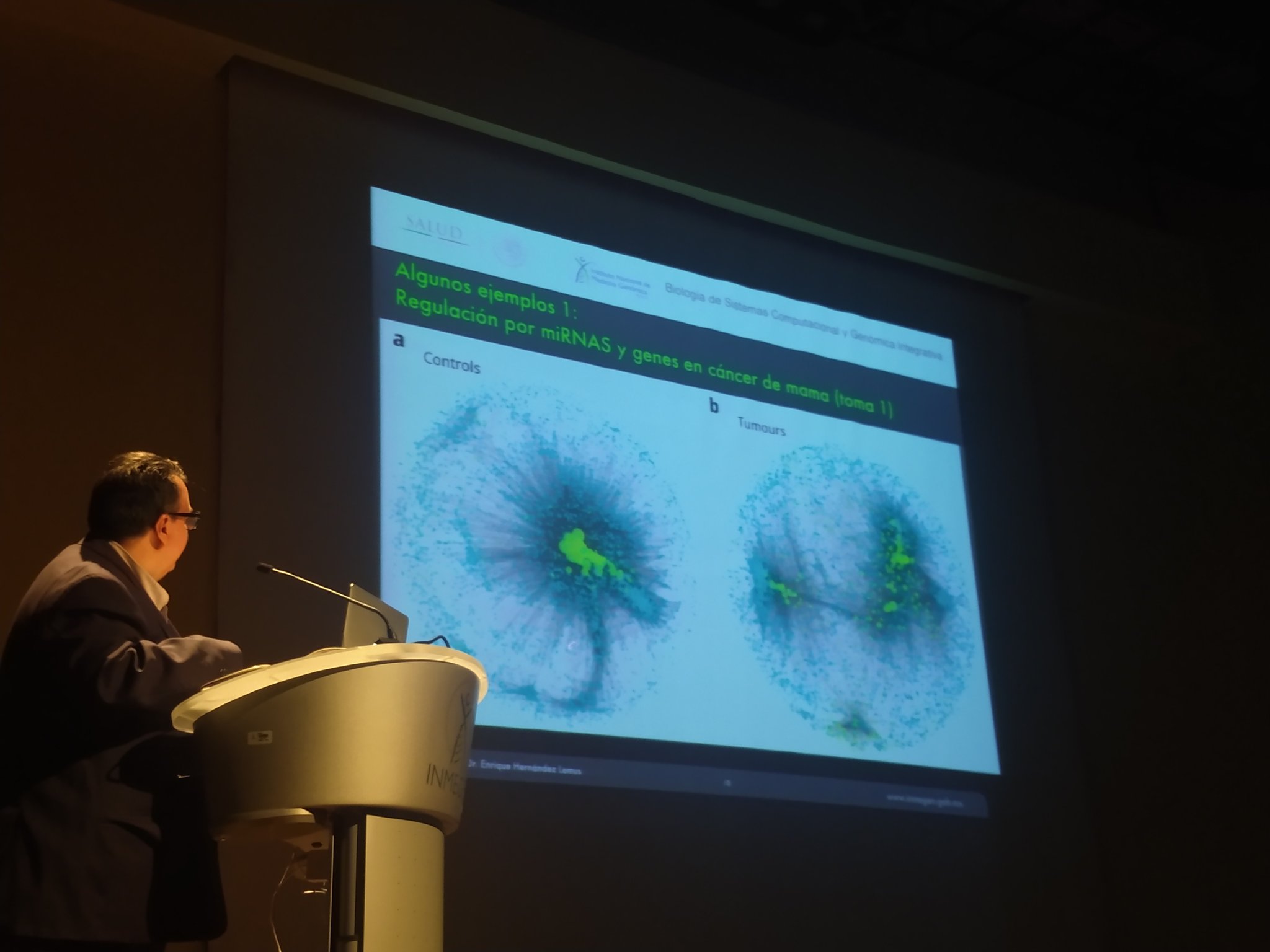
Population genetics:
Another strong area of research at INMEGEN is population genetics. A major focus of this is related to the heterogeneity of the mexican population. Sandra Romero and Juan Carlos Fernández talked about the challenges in analyzing ancestry in the mexican population and developing Ancestry-Informative markers. J. Víctor Moreno-Mayar and Federico Sanchez Quinto, who recently joined the Institute, talked about precision medicine strategies that make use of paleogenomic and PopGen techniques, and novel strategies in data imputation.
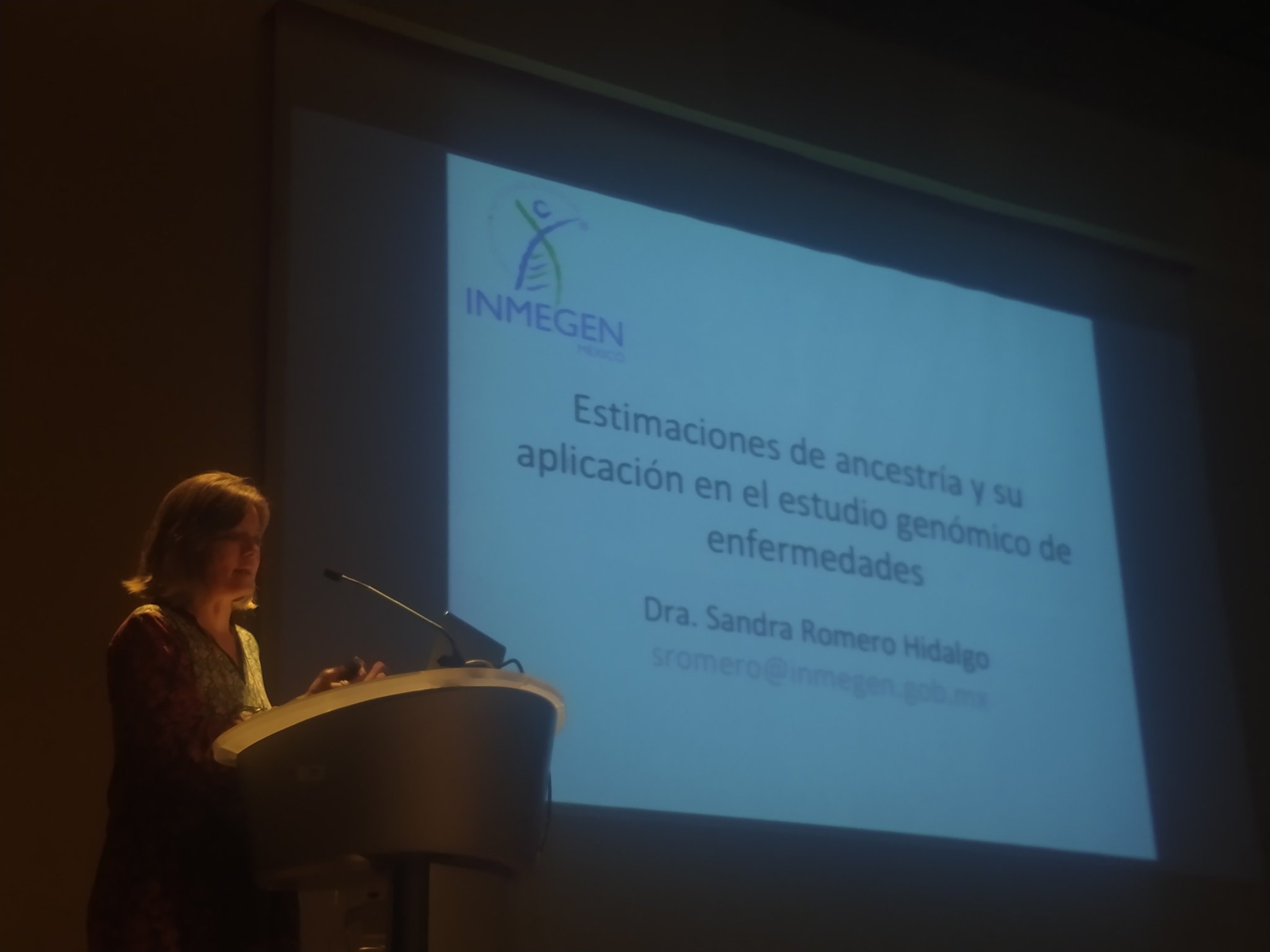
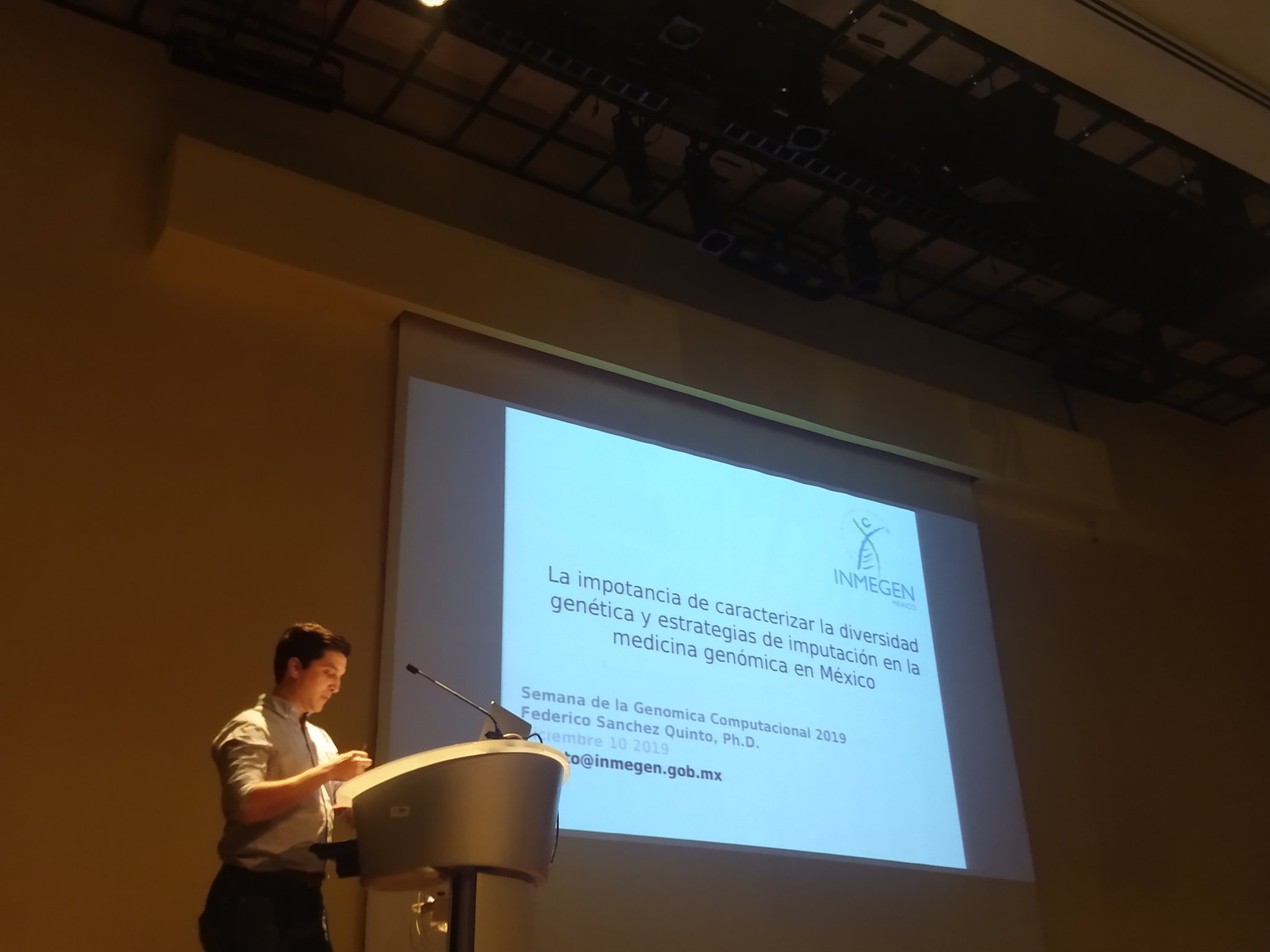

Systems biology and the human microbiome:
The other cluster of research interests involves a large overlap between systems biology and studies on the human microbiome. Osbaldo Resendis showed some of his recent works in both microbiome and the systems biology of cancer. His colleague Aarón Vázquez Jiménez showed advances in models for cellular decision making using single-cell sequencing data. Santiago Sandoval Motta talked about his models of the role of microbiome in evolution.

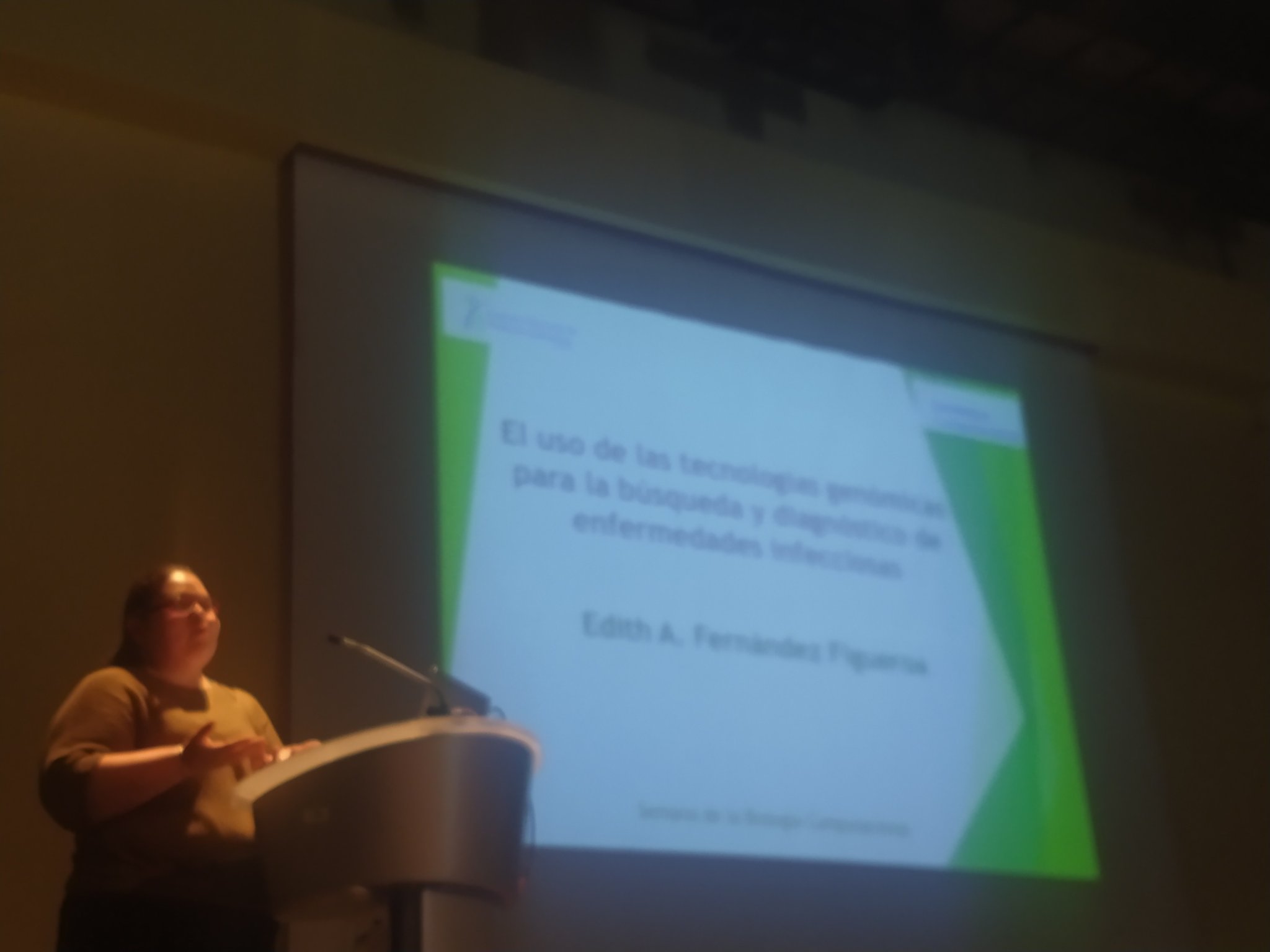
Proteins, Experiments, COBASI, and drugs…
Rodrigo Dorantes-Gilardi talked about his work on protein structure and function models using graph theory. Edith Fernandez talked about the experimental aspects of generating data to feed and validate computational models. Laura Lucila Gómez Romero showed us her COBASI method for the identification of de novo Single nucleotide Variants. I talked a little bit about my recent systems pharmacology projects.

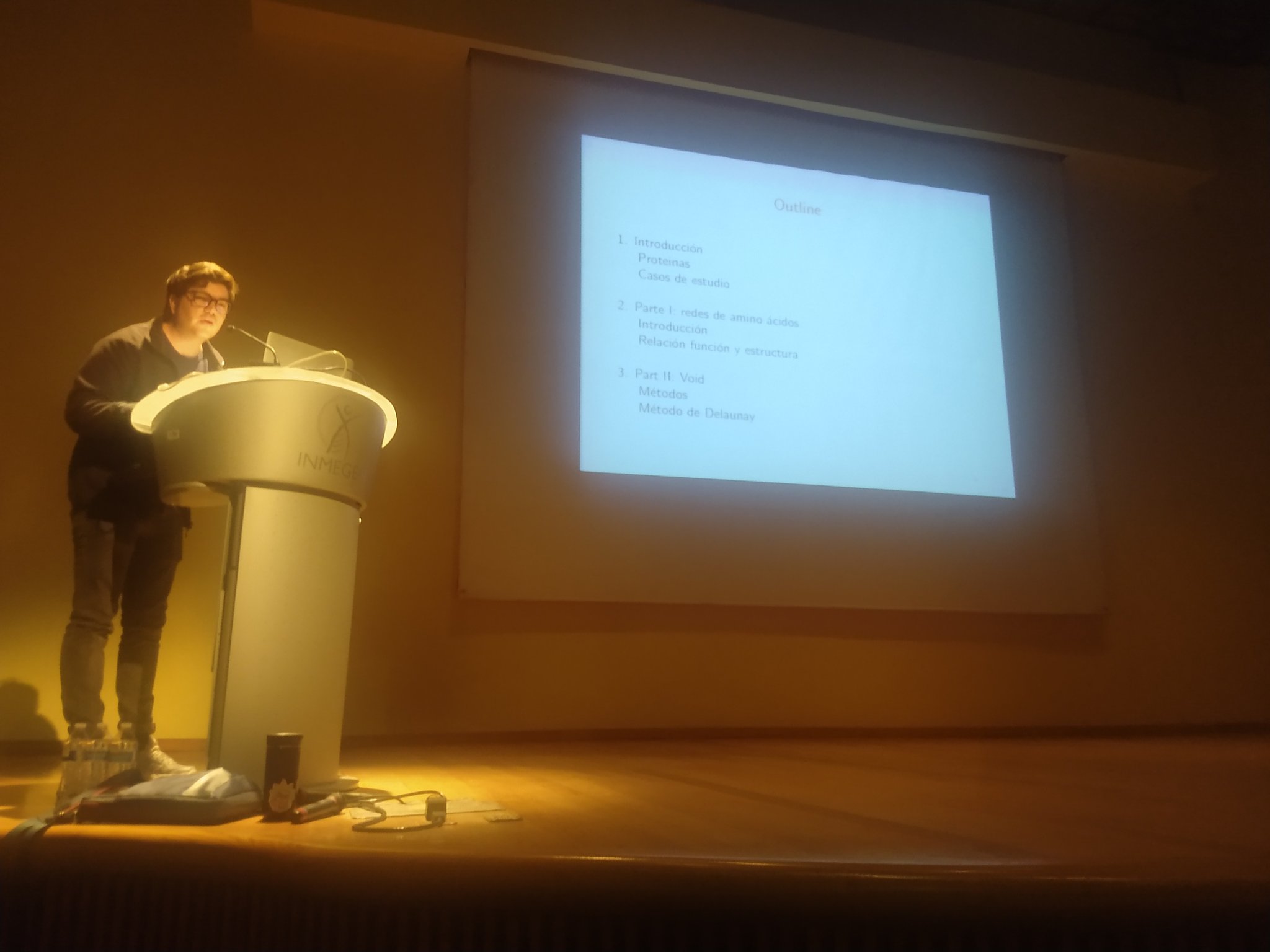
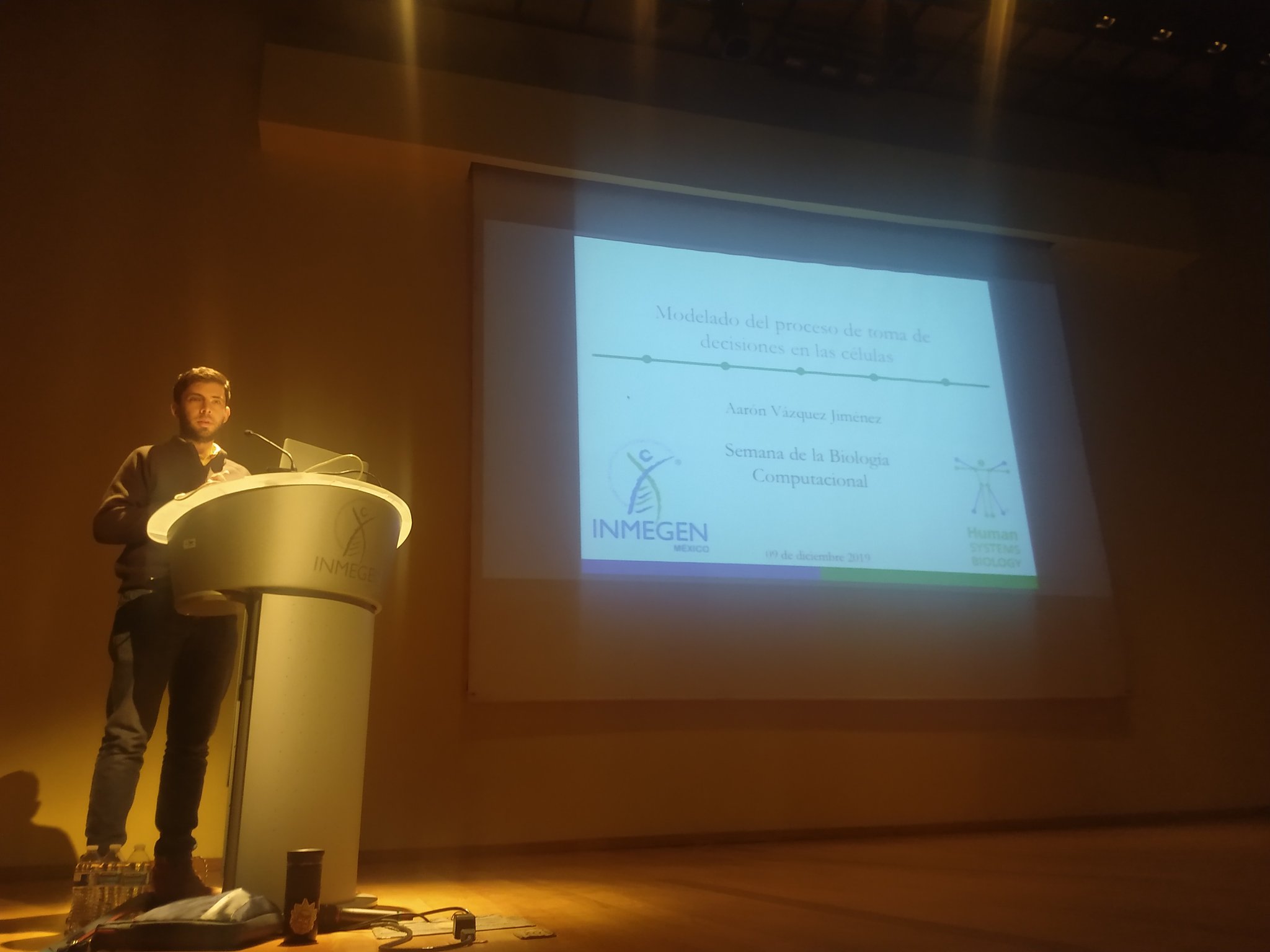
Overall, the experience preparing and participating in the Computational Biology Week was very fulfilling. I enjoyed listening to all my colleagues talking about their research interests; I hope some collaborations will emerge from this alone. The audience seemed to enjoy the talks as well, both those who were on-site as well as those who followed them online. I look forward for the next edition of this event, and hope that other computational biologist researchers might join us…
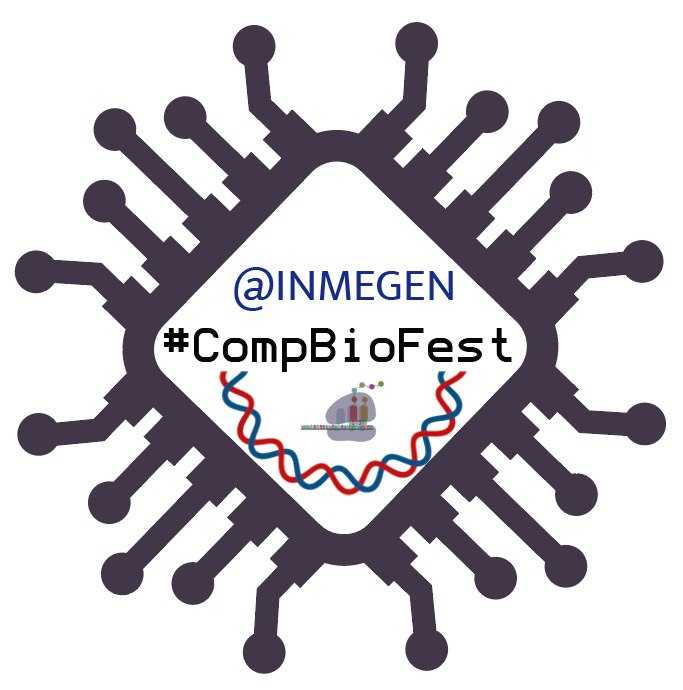
… And that we get to print our stickers on time, next time.